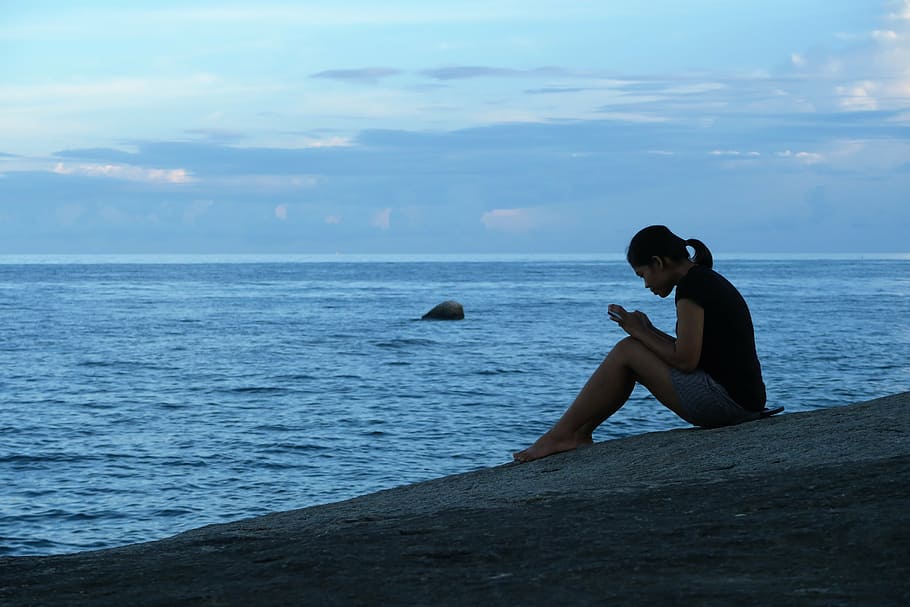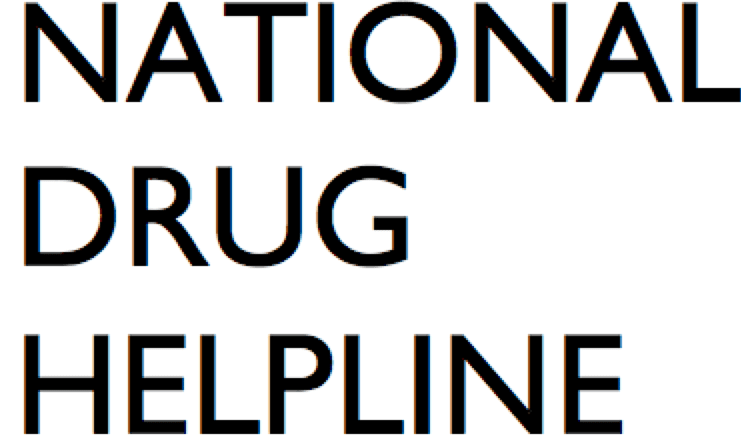If you are struggling with alcohol or drug addiction, you may be thinking of calling a drug addiction hotline in Hawaii. Let’s be honest. You are facing a monumental battle and endless struggles. Here’s what you might be experiencing: Each day can feel like an arduous task with constant cravings, emotional turmoil, and difficult relationships. As the grip of addiction tightens, your thoughts and priorities can become distorted. You might find yourself trapped in a vicious cycle, willing to sacrifice anything for the next fix. This unrelenting internal conflict can leave you torn between the desire to get clean and the overwhelming power of your addiction. Physically, your body continues to suffer as your health deteriorates from the ravages of substance abuse. As time goes on, the addiction takes a toll on your mental well-being as well, causing profound loneliness, guilt, and shame. You become socially isolated as trust disintegrates and friends and relatives turn away. But despite these immense challenges, you cling to a glimmer of hope and want to embark on the path to recovery.
That’s where a Hawaii drug hotline comes in as nothing short of a lifeline. The National Drug Helpline is a toll-free 24/7 hotline number 1-844-289-0879 that offers round-the-clock information and support to anyone battling drug or alcohol abuse.
The helpline is staffed by helpful, compassionate, and non-judgmental operators who understand that addiction is a complex mental health condition with no magic bullet treatment. It is a safe space to ask questions, talk about your most pressing concerns, and obtain up-to-date information.
Call the National Drug Helpline today to find drug and alcohol treatment facilities in your community, including Honolulu, Kailua, Hilo, Pearl City, and other areas. Obtain access to useful resources and updated information specific to your local area, such as treatment centers, counselors, and support groups.
HAWAII SUBSTANCE ABUSE RESOURCES
- Alcohol and Drug Abuse – Hawaii Cares
- Alcoholics Anonymous Hawaii
- Cannabis Control and Regulation in Hawaii
- Coalition for a Drug-Free Hawaii
SUBSTANCE ABUSE IN HAWAII
The Substance Abuse and Mental Health Services Administration (SAMHSA) reports the following with regards to substance use in Hawaii: [1]
- Past-month marijuana use was reported by 6.2% of adolescents aged 12-17 years in 2017-2019 compared to 10.8% in 2002-2004. During a similar timeframe, the US national average decreased from 7.9% in 2002-2004 to 6.8% in 2017-2019.
- Past-month alcohol use was reported by 5.5% of youth aged 12-17 years in 2017-2019 compared to 18.1% in 2002-2004. The US national average changed from 17.6% in 2002-2004 to 9.4% in 2017-2019.
- Past-month illicit drug use was reported by 7.7% of teenagers in Hawaii aged 12-17 years in 2017-2019 compared to 8.2% in 2002-2004. The US national average was stable at 8.2% during this timeframe.
- Past-year initiation of substances (first lifetime use) was reported by youth aged 12-17 years as follows during 2017-2019: Alcohol 9.4% (US average 9.3%), marijuana 5.5% (US average 5.2%), and cigarettes 1.7% (US average 2.3%).
Both alcohol and marijuana use among adolescents in Hawaii have shown encouraging downward trends between 2002 and 2019. Illicit drug use among the youth has also decreased slightly. In addition, these numbers are all similar or lower than the US national average.
The data for young adults in Hawaii is as follows:
- Past-year marijuana use was reported by 25.0% of young adults aged 18-25 years in Hawaii in 2017-2019 compared to 29.5% in 2002-2004. During a similar timeframe, the US national average increased from 28.7% in 2002-2004 to 35.0% in 2017-2019.
- Past-year marijuana use disorder was reported in 3.9% of young adults aged 18-25 years in 2017-2019, compared to 6.7% in 2002-2004. The US national average changed from 6.0% in 2002-2004 to 5.6% in 2017-2019.
- Past-year opioid use disorder was reported in 1.0% of young adults aged 18-25 years in Hawaii in 2017-2019 compared to 0.7% in 2015-2017. The US national average changed from 1.3% in 2015-2017 to 1.0% in 2017-2019.
- Past-year illicit drug use disorder was reported in 6.4% of Hawaii residents aged 18-25 years in 2017-2019, compared to 7.3% in 2015-2017. The US national average hovered around 7.2-7.5% during this timeframe.
- Past-month binge alcohol use was reported by 33.8% of young adults aged 18-25 years in 2017-2019 compared to 35.4% in 2015-2017. The US national average in 2017-2018 was 35.4% showing binge alcohol use in Hawaii is around the same as the country as a whole.
- Past-year alcohol use disorder among young adults aged 18-25 was reported in 12.6% of Hawaii residents in 2017-2019, compared to 19.6% in 2002-2004. The US national average for 2017-2019 was 9.8%. Hawaii therefore showed a higher percentage of young adults battling alcohol use disorder compared to the national average.
- Past-year substance use disorder was reported in 16.0% of young adults aged 18-25 in Hawaii in 2017-2019 compared to 16.1% in 2015-2017.
The Behavioral Health Barometer also found the following for 2017-2019 in Hawaii residents aged 12 years and older:
- Past-year marijuana use: 15.4% (US average 16.2%)
- Past-year marijuana use disorder: 1.8% (US average 1.6%)
- Past-year heroin use: 0.18% (US average 0.30%)
- Past-year prescription painkiller misuse: 4.0% (US average 3.7%)
- Past-year opioid use disorder: 0.6% (US average 0.7%)
- Past-year illicit drug use disorder: 3.3% (US average 2.9%)
- Past-year alcohol use disorder: 6.3% (US average 5.3%)
- Past-year substance use disorder: 8.4% (US average 7.4%)
- Number of people enrolled in substance use treatment (single day counts for 2019): 5,217
- Number of people enrolled in opioid treatment programs (single day counts for 2019): 765
- Problems among people enrolled in treatment: 48.2% drug problem only, 13.2% alcohol problem only, 38.6% both drug and alcohol problems

UNIQUE CHALLENGES IN FIGHTING SUBSTANCE ABUSE IN HAWAII
Fighting drug and alcohol abuse in Hawaii presents a unique set of challenges that are deeply rooted in the state’s geographical location and cultural identity.
The remote location of the Hawaiian Islands has led to a limited access to treatment facilities. This has made it difficult for Hawaii residents seeking help with addiction recovery to receive timely professional care and support.
Additionally, the allure of Hawaii’s idyllic image as a tourist destination creates an environment that is especially conducive to substance abuse. Drugs and alcohol are readily available and manpower to fight drug trafficking is limited, creating a vicious scenario.
The state’s rich cultural diversity and history add complexity to the issue. Substance abuse intersects with traditional practices that have close ties to cultural identity. For instance, Hawaiian culture places high value on “ohana” (family) and communal support. Drug abuse can strain these connections, leading to a breakdown of the social fabric.
Overcoming these unique challenges requires a comprehensive approach that combines culturally sensitive prevention programs, improved access to treatment options, community engagement, and stronger law enforcement efforts. A collective effort is required to address the complex interplay between substance abuse, culture, and the geographical realities of Hawaii.
CRYSTAL METHAMPHETAMINE IN HAWAII
The prevalence of methamphetamine, known as “ice” or “crystal meth” on the street, poses a significant problem in Hawaii. This is one of the most widely abused illicit drugs in the state. The FBI attributes widespread prevalence of crystal meth in the state to strong ties with both international and domestic drug trafficking organizations. Most of the drug supply in the state comes from Mexico and California and to a lesser extent Las Vegas, with 80-90% of the drugs being smuggled in through mail parcels and commercial flights. [2]
Crystal meth abuse has led to devastating consequences for individuals and communities alike, affecting the very fabric of Hawaiian society by causing violence on the streets, wasting young lives, wreaking havoc on families, and eating up millions of precious dollars on health care and criminal justice systems. For example, the FBI estimates that over 90% of property crime in the state is drug-related. Crystal meth users can spend up to $170 per day on the habit (2004 data). [2]
OPIOID ABUSE IN HAWAII
The good news is that Hawaii has one of the lowest rates of opioid overdose deaths. In 2017, 53 lives were lost to drug overdoses involving opioids. This is a rate of 3.4 deaths per 100,000 persons. There were no reported deaths related to synthetic opioids other than methadone (mainly fentanyl) in 2017. In addition, there has been no significant change in death rates since data collection began a decade ago in 2013. [3]
Providers in Hawaii wrote 37.0 opioid prescriptions for every 100 persons. This is compared to the US average of 58.7 per 100 persons. Hawaii therefore has one of the lowest rates of opioid prescriptions in the country. Deaths related to prescription opioids have been trending down from 4.8 per 100,000 persons in 2007 to 2.5 per 100,000 in 2017. [3]
- SAMHSA. Behavioral Health Barometer Hawaii. Available online. Accessed on July 11, 2023.
- FBI Honolulu Division. Crystal Methamphetamine in Hawaii – Trends and Abuses. Available online. Accessed on July 11, 2023.
- National Institute on Drug Abuse. Hawaii Opioid Summary. Available online. Accessed on July 11, 2023.
Last updated: April 8, 2025
